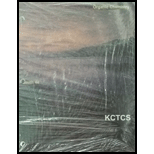
(a)
Interpretation: An explanation for the use of
Concept introduction: The hydride reduction or the nucleophilic addition of carbanions to carbonyl compounds (
(b)
Interpretation: The product formed from the treatment of A with
Concept introduction: The Wittig reaction utilizes carbon nucleophile from the Wittig reagent to yield
(c)
Interpretation: The structure of the isotretinoin, obtained from the reaction of X and Y is to be drawn.
Concept introduction: The Wittig reaction utilizes carbon nucleophile from the Wittig reagent to yield alkenes. When a carbonyl compound is treated with a Wittig reagent, the
Want to see the full answer?
Check out a sample textbook solution
Chapter 21 Solutions
KCTCS Organic Chemistry Value Edition (Looseleaf) - Text Only
- When the conjugate acid of aniline, C6H5NH3+, reacts with the acetate ion, the following reaction takes place: C6H5NH3+(aq)+CH3COO(aq)C6H5NH2(aq)+CH3COOH(aq) If Kafor C6H5NH3+ is 1.35105 and Kafor CH3COOH is 1.86105 , what is K for the reaction?arrow_forwardExplain amine catalysis in urethane bond formationarrow_forwardDraw the structure of the predominant form of CF3CH2OH (pK a = 12.4) at pH = 6.arrow_forward
- Draw the organic products formed when each compound is treated with H2, Pd-C. Indicate the three-dimensional structure of all stereoisomers formed.arrow_forwardAsetaldehitin aşağıdakiler ile olan reaksiyonunu yazınız.(a) Tollens’ ayracı (b) 2,4-dinitrofenilhidrazin (c) I2 / NaOHarrow_forwardCyclopentanecarboxylic acid and 4-hydroxycyclohexanone have the same formula (C6H10O2), and both contain an —OH and a C=O group. How could you distinguish between them using IR spectroscopy?arrow_forward
- Draw and name the seven aldehydes and ketones with the formula C5H10O. Which are chiral?arrow_forward6. Aldehydes are characterized by reactions: A) Nucleophilic addition of amines B) Nucleophilic addition of water C) Nucleophilic addition of alcohols D) Polymerizationarrow_forwardGiven that C6H11COOH has a pKa = 4.8 and C6H11N+H3 has a pKa = 10.7, (a) What pH would you make the water layer to cause the carboxylic acid to dissolve in the water layer and the amine to dissolve in the ether layer? (b) What pH would you make the water layer to cause the carboxylic acid to dissolve in the ether layer and the amine to dissolve in the water layer?arrow_forward

 Introduction to General, Organic and BiochemistryChemistryISBN:9781285869759Author:Frederick A. Bettelheim, William H. Brown, Mary K. Campbell, Shawn O. Farrell, Omar TorresPublisher:Cengage Learning
Introduction to General, Organic and BiochemistryChemistryISBN:9781285869759Author:Frederick A. Bettelheim, William H. Brown, Mary K. Campbell, Shawn O. Farrell, Omar TorresPublisher:Cengage Learning Chemistry: Principles and ReactionsChemistryISBN:9781305079373Author:William L. Masterton, Cecile N. HurleyPublisher:Cengage Learning
Chemistry: Principles and ReactionsChemistryISBN:9781305079373Author:William L. Masterton, Cecile N. HurleyPublisher:Cengage Learning


